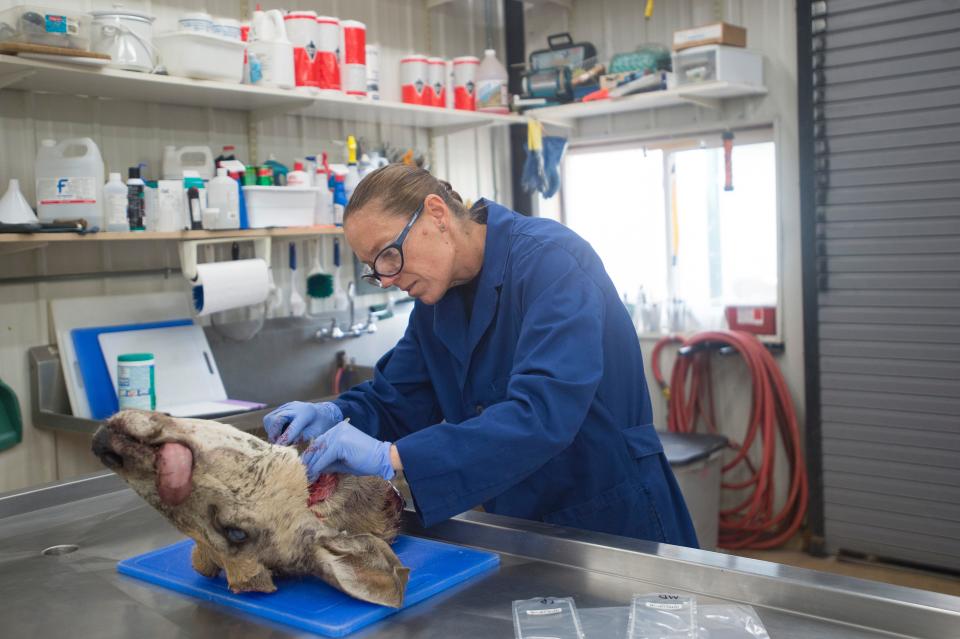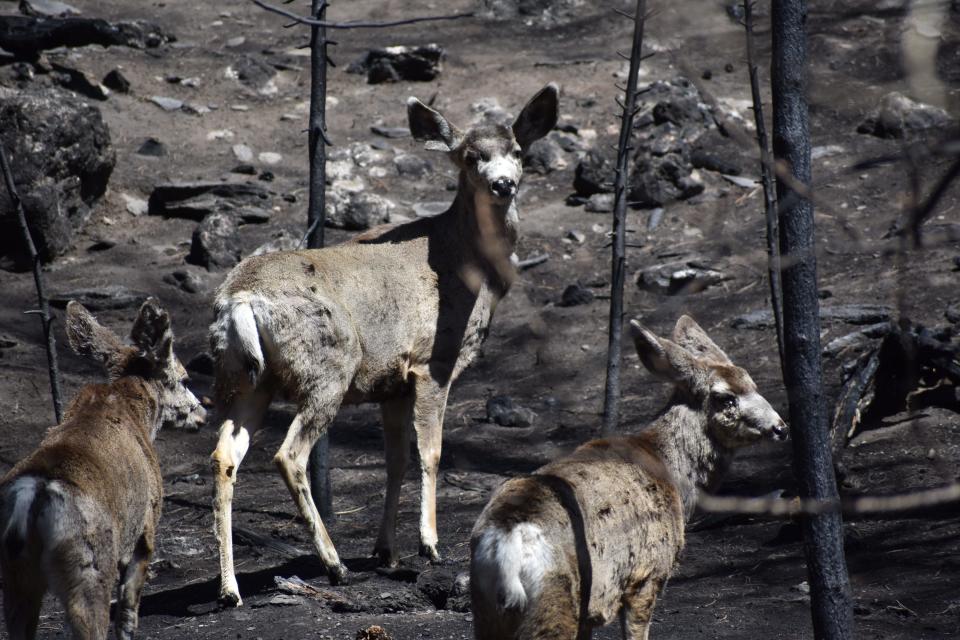Worried about 'zombie deer disease'? Here are the facts about chronic wasting disease
Recent headlines hyping impending human doom caused a decades-old fatal disease of deer and elk that was first discovered on the Colorado State University foothills campus in Fort Collins to go viral.
"'Zombie deer disease’ epidemic spreads in Yellowstone as scientists raise fears it may jump to humans," screamed a headline from The Guardian on Dec. 22. "Zombie Deer Disease a 'Slow Moving Disaster' for Humans, Scientists Warn," read a headline from Newsweek on Dec. 23.
Many other media outlets continued spreading the story online. Despite the headlines, there was little new news and some half-truths as pieces reflected on what researchers have known for years regarding chronic wasting disease.
Here is what you need to know about the most current chronic wasting disease science, including the disease's long association with CSU and Fort Collins, its threat to humans and what can be done to protect herds and humans.
Why is chronic wasting disease sometimes called 'zombie deer disease'?
Infected deer, elk and moose show neurological signs such as listlessness, lack of coordination, lack of fear of humans, weight loss and drooling.

What causes chronic wasting disease?
Chronic wasting disease is caused by an abnormal prion.
The disease belongs to a family of prion or protein diseases such as scrapie in sheep, mad cow disease in cattle and Creutzfeldt-Jakob disease in humans.
How are CSU and Fort Collins connected to chronic wasting disease?
In 1967, researchers noticed mule deer captured from the wild in Colorado and confined in pens at the Colorado State University foothills campus as part of a winter survival study were prematurely and mysteriously wasting away and dying.
It remains a mystery if the mule deer were already infected with what later became known as chronic wasting disease before they were captured or if scrapie research on domestic sheep held in the same pens as the deer crossed species.
Like chronic wasting disease, which affects deer, elk and moose, scrapie is a fatal neurodegenerative disease affecting the central nervous system of sheep and goats.
In 1978, Beth Williams, a veterinary pathology resident at CSU, identified the disease as a transmissible spongiform encephalopathy (TSE), a family of diseases that includes mad cow disease in cattle and Creutzfeldt-Jakob Disease in humans.
Has chronic wasting disease found in Yellowstone National Park raised concerns of spread to humans?
No.
The Yellowstone discovery has nothing to do with raising concerns of potential human transmission, which have been expressed by researchers for several years.
In October 2023, chronic wasting disease was discovered for the first time in Yellowstone when a mule deer died of the disease.
That mule deer buck was originally captured by the Wyoming Game and Fish Department near Cody in March 2023 as part of a population dynamics study and fitted with a GPS collar, according to a Yellowstone news release.
Chronic wasting disease has been detected in Wyoming since 1981, now affecting nearly the entire state, including the area around Yellowstone. However, Yellowstone officials have said they will closely monitor the disease to determine impacts to its deer, elk and moose.

What threat does chronic wasting disease pose to humans?
There have been no reported cases of chronic wasting disease being transmitted to humans.
The Centers for Disease Control and Prevention has for several years said on its website: "To date, there is no strong evidence for the occurrence of CWD in people, and it is not known if people can get infected with CWD prions."
It also cautions experimental studies in monkeys "raise the concern that CWD may pose a risk to people and suggest that it is important to prevent human exposures to CWD.''
The CDC says additional studies are taking place to identify if any prion diseases could be occurring at a higher rate in people who are at increased risk for contact with potentially infected deer or elk meat, such as hunters.
However, scientists expect the study to take many years before they will determine what risk, if any, chronic wasting disease poses to people because of the long time it takes before symptoms of the disease appear.
Previous coverage: Colorado mountain lions help cull deer with chronic wasting disease. Could wolves?
Where is chronic wasting disease found in Colorado, elsewhere?
According to the Colorado Parks and Wildlife website:
The percentage of sampled animals infected (or prevalence) appears to be rising in many affected Colorado herds. Colorado has rotating mandatory chronic wasting disease testing of harvested deer in certain game management units to track the disease.
As of April 2022, chronic wasting disease has been detected in 40 of Colorado's 54 mule and white-tailed deer herds, 17 of 42 elk herds and two of nine moose herds.
Disease prevalence (percent infected) is highest in deer and lowest in moose.
The Eastern Plains and areas between Meeker and Steamboat Springs have the highest infection rates (20% and above) for deer.
Thirty-two states and four Canadian provinces have reported cases in wild herds. Eighteen states, including Colorado, and three Canadian provinces, have reported cases in private captive facilities, according to the U.S. Geological Survey.
What can be done to protect herds and humans?
Chronic wasting disease is always fatal to deer, elk and moose. There are no treatments or vaccines.
Animals spread the prion through feces, saliva, blood and urine directly and through environmental contamination of soil, food and water.
It is unlikely the disease can be eradicated, so Colorado wildlife officials are trying to prevent the prevalence and spread through hunting to remove infected animals. Other management actions have been taken to reduce chronic wasting disease prevalence with varied effectiveness.
To minimize exposure, it is advised hunters not shoot, handle or consume any deer, elk or moose that is acting abnormally or appears to be sick. When field-dressing game, hunters are advised to wear rubber gloves and minimize contact with the brain, spinal cord, eyes, spleen or lymph nodes.
For more information about chronic wasting disease, visit https://cpw.state.co.us/Documents/Hunting/BigGame/CWD/PDF/CWDFAQ.pdf.
This article originally appeared on Fort Collins Coloradoan: Can humans get chronic wasting disease from deer? Here's what we know

